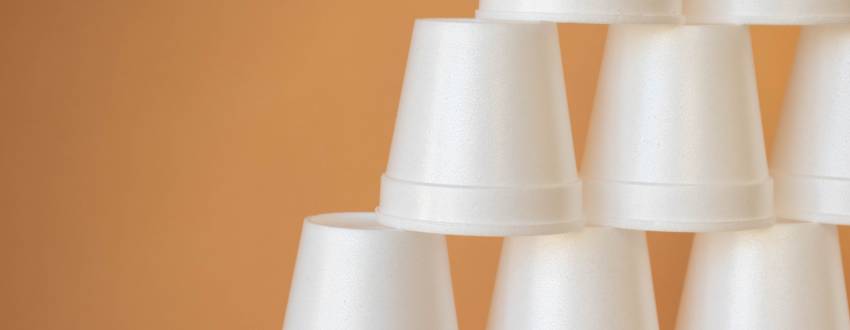Adapted with permission from our partner OU Kosher.
As we approach the Purim season, we can be thankful that today there are many reliably kosher-certified brandies, cognacs, and liquors on the market. Let’s examine the kashrus issues of distilled wine spirits.
Sought after by connoisseurs, cognac is one of the gourmet items of the liquor world; the finest cognac commands prices in the hundreds of dollars per bottle. Actually, cognac is but one specialty name for brandy – which is liquor made from distilled wine – and refers specifically to grape brandy originating in the Cognac region of France. Other well-known members of this group are Armagnac (also French), Brandy de Jerez (from Spain) and “pomace brandies” (made from pressed grape pulp, skins and stems) such as Italian Grappa and French Marc. Products named for their place of origin, like Bordeaux or Champagne wines, are subject to the laws of their respective countries.
In the U.S., the Bureau of Alcohol, Tobacco and Firearms defines brandy as “an alcoholic distillate from the fermented juice, mash, or wine of fruit or from the residue thereof…” “Brandy” or “grape brandy” refers specifically to distillates made from wine. “Fruit brandy,” on the other hand, may refer to brandies “from the fermented juice or mash of whole, sound, ripe fruit, or from standard grape, citrus, or other fruit wine….” Thus, the normative sense of the word “brandy,” unless it is modified in some way, is distilled liquor from grape juice or grape wine.
Clearly, the wine or grape juice fermented to make brandy is subject to the laws of Stam Yeinam. That means that it may not be touched or moved by non-Jews prior to being mevushal (cooked). Stam Yayin is assur mid’Rabbanan – Rabbinically forbidden – and one may not drink it. There is a discussion among the Poskim as to whether the Mishnah’s ruling (Avodah Zara 29b) that it is forbidden even to benefit from it applies today. Rema (see Shulchan Aruch 123:1, 114:10 and 155:3) states that one may benefit from Stam Yayin b’makom hefsed, while the Shulchan Aruch (123:1) holds that Stam Yayin is forbidden even if there is significant loss involved.
The production of kosher grape juice and wine is quite complex. In order to assure that the product does not become Stam Yayin, mashgichim literally take over some or all of the aspects of production. At the time of the grape crush in early autumn, teams of mashgichim are sent to the sites to kasher equipment and ensure that the kosher product is properly segregated and monitored. In the northern hemisphere, this season generally coincides with the Yamim Tovim, and many a mashgiach has spent Rosh Hashanah (sometimes even Yom Kippur) and Sukkos far from his home community, family and friends.
In one innovative method to ensure kashrus, called “hot bricking,” grape juice is pasteurized immediately after the grapes are crushed. This greatly simplifies the hashgachah, as the juice is now mevushal and non-Jews may handle the product without it becoming Stam Yayin. The case of wine may be more complicated, as pasteurization is commonly delayed until later stages or – in the case of non-mevushal wines – is never done at all. Here, great care is taken to make certain that the non-Jewish workers do not jeopardize the kosher status of the wine.
Brandy and cognac production requires several further steps. As the definition quoted above states, brandy is a distillate. This means that the end product is made much the way Scotch or bourbon is made: the primary material is distilled. Distillation is, essentially, the process by which liquid mixtures are separated by heat fractionation. Water boils at 100° Celsius (212° Fahrenheit); alcohol boils at 78.3° Celsius (173° Fahrenheit). Other “notes” or fractions have other boiling points. How do we separate them?
The original liquid is heated in a still, which is a specialized tank designed to optimize the removal of the desired fraction. For example, if we heat a liquid containing alcohol to 78.3°C, the alcohol will vaporize and rise as steam. That steam is then captured and condensed. Done enough times, one can achieve a liquid which is 95% pure alcohol, referred to as “neutral spirits” or “everclear.” Alternatively, one can have stills where the entire mixture is boiled at 100°C, but different collection points are made at different heights in the stack. Because the different fractions have different boiling points and weights, some are present in higher concentrations at different heights in the column. There are, as you can imagine, several variations on this theme, including systems that use vacuums and other modifications, all of which affect how the machinery is kashered.
Because alcohol distillation involves cooking at high temperatures, the end product is mevushal. (In fact, the word “brandy” comes from the Dutch word brandewijn – “burnt wine” ). So while the base materials used to make brandy are subject to the laws of Stam Yayin, the final product is not. Thus, there is no fundamental problem with having non-Jews handle or pour brandy.
One might ask a simple question: Isn’t the distilled product only alcohol, and therefore divorced from the original liquid? Responsa Rivash 255 rules that distilled Stam Yayin (brandy, for example) remains forbidden because the zei’ah (steam) that rises out of the liquid retains the halachic status of the original liquid. The Mishkenos Yaakov (Y.D. 34) in a novel approach is lenient about zei’ah in many cases, but seems to agree that we must be machmir regarding Stam Yayin. The Shulchan Aruch and later Poskim all rule strictly.
Because brandy has a flavor distinct from the original wine, its brachah is Shehakol rather than Borei pri hagafen (see Noda B’Yehuda, Y.D. 26). Nevertheless, there is no question that the original wine is intrinsic to the unique flavor of each brandy. This is in the end, perhaps, the reason to be stringent: the brandy may be distinct from the wine, but the flavor and character of the wine are still very much present in the brandy. Rather than seeking to divorce the flavors of the wine from the brandy, brandy distillation is done at the lowest possible temperatures that ensure that the vapors contain as high a proportion as possible of the congeners, the hundreds of organic chemical compounds in the wine that define its flavor profile. In the end, brandy is approximately 40% alcohol. Obviously, much of the substance of the original wine remains – albeit in a concentrated form.
This concentrated wine content affects the halachah. In their “straight,” normal drinking-strength forms, Stam Yayin wine and grape juice have a special halachic status. Unlike other issurim, they are batel b’shishah rather than b’shishim; one needs only six times the volume of the original to nullify their taste, rather than the normative sixty times. When concentrated, however, it is required to nullify the full, reconstituted volume of the wine! Clearly, as we have pulled the essence of the wine from the liquid, this is many times the volume of the remaining brandy and so, in practice, we require the normative sixty times for kashering.
Like its cousins, bourbon, Scotch and whiskey, brandy is aged in casks to mature its flavor. Here we get into the much-discussed issue of wine casks as it applies to distilled spirits. When making cognac, for example, the pre-aged “raw” product first mellows in new oak casks. It is then further aged in “mellowed” (previously used) casks from wine production. Clearly, those casks have to be kosher. Interestingly, the fact that brandy is not batel b’shishah (discussed above) leads to a stringency vis-à-vis Scotch and whiskey. While many follow the Igros Moshe’s leniencies regarding spirits aged in sherry and other wine casks – one of which is that any wine would be batel b’shishah in the casked whiskey – in the case of brandy casks, it would be necessary to nullify significantly more than six times the original volume.
As is the case with food items, so it is with drinks: we need to understand where a product comes from and how it is made. Only then can the kosher issues be grasped and dealt with.
Adapted from https://oukosher.org/blog/consumer-kosher/wine-is-fine-but-liquor-brandy-cognac-and-other-distilled-wine-spirits/.





